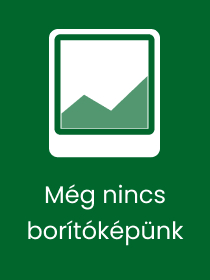
Translation, Interpreting and Technological Change
Innovations in Research, Practice and Training
Sorozatcím: Bloomsbury Advances in Translation;
-
20% KEDVEZMÉNY?
- A kedvezmény csak az 'Értesítés a kedvenc témákról' hírlevelünk címzettjeinek rendeléseire érvényes.
- Kiadói listaár GBP 95.00
-
45 386 Ft (43 225 Ft + 5% áfa)
Az ár azért becsült, mert a rendelés pillanatában nem lehet pontosan tudni, hogy a beérkezéskor milyen lesz a forint árfolyama az adott termék eredeti devizájához képest. Ha a forint romlana, kissé többet, ha javulna, kissé kevesebbet kell majd fizetnie.
- Kedvezmény(ek) 20% (cc. 9 077 Ft off)
- Kedvezményes ár 36 309 Ft (34 580 Ft + 5% áfa)
Iratkozzon fel most és részesüljön kedvezőbb árainkból!
Feliratkozom
45 386 Ft

Beszerezhetőség
Megrendelésre a kiadó utánnyomja a könyvet. Rendelhető, de a szokásosnál kicsit lassabban érkezik meg.
Why don't you give exact delivery time?
A beszerzés időigényét az eddigi tapasztalatokra alapozva adjuk meg. Azért becsült, mert a terméket külföldről hozzuk be, így a kiadó kiszolgálásának pillanatnyi gyorsaságától is függ. A megadottnál gyorsabb és lassabb szállítás is elképzelhető, de mindent megteszünk, hogy Ön a lehető leghamarabb jusson hozzá a termékhez.
A termék adatai:
- Kiadó Bloomsbury Publishing (UK)
- Megjelenés dátuma 2024. június 13.
- Kötetek száma Hardback
- ISBN 9781350212947
- Kötéstípus Keménykötés
- Terjedelem224 oldal
- Méret 238x162x20 mm
- Súly 500 g
- Nyelv angol
- Illusztrációk 7 bw illus 561
Kategóriák
Hosszú leírás:
The digital era is characterised by technological advances that increase the speed and breadth of knowledge turnover within the economy and society. This book examines the impact of these technological advances on translation and interpreting and how new technologies are changing the very nature of language and communication.
Reflecting on the innovations in research, practice and training that are associated with this turbulent landscape, chapters consider what these shifts mean for translators and interpreters. Technological changes interact in increasingly complex and pivotal ways with demographic shifts, caused by war, economic globalisation, changing social structures and patterns of mobility, environmental crises, and other factors. As such, researchers face new and often cross-disciplinary fields of inquiry, practitioners face the need to acquire and adopt novel skills and approaches, and trainers face the need to train students for working in a rapidly changing landscape of communication technology. This book brings together advances and challenges from the different but intertwined perspectives of translation and interpreting to examine how the field is changing in this rapidly evolving environment.
Tartalomjegyzék:
List of Figures
List of Tables
List of Contributors
Introduction: Technological Change in Translation and Interpreting: Current Directions and Future Challenges, Marion Winters (Heriot-Watt University, UK), Sharon Deane-Cox (University of Strathclyde, UK), and Ursula Bï¿1⁄2ser (Heriot-Watt University, UK)
Part I: Shifting Boundaries of Human and Technology Interaction
1. Cognitive Artefacts and Boundary Objects: On the Changing Role of Tools in Translation Project Management, Regina Rogl and Hanna Risku (University of Vienna, Austria)
2. Interpreters' Performances and Cognitive Load in the Context Of a CAI Tool, Bart Defrancq (Ghent University, Belgium), Helena Snoeck (Ghent University, Belgium) and Claudio Fantinuoli (University of Mainz-Germersheim, Germany)
3. Customization, Personalization, and Style in Literary Machine Translation, Dorothy Kenny (Dublin City University, Ireland) and Marion Winters (Heriot-Watt University, UK)
4. The Figure of the Literary Translator amidst New Technologies, Damien Hansen (University of Liï¿1⁄2ge, Belgium and Grenoble Alpes University, France)
Part II: Shifting Methods and Models
5. Risk Management for Content Delivery via Raw Machine Translation, Maarit Koponen (University of Eastern Finland) and Mary Nurminen (Tampere University, Finland)
6. Machine Translation in the Legal Context: A Spanish-to-English Comparative Study of Statistical vs. Neural Machine-Translation Output, Jeffrey Killman (University of North Carolina at Charlotte, USA)
Part III: Shifting Translation and Interpreting Pedagogies
7. Open-Source Statistical Machine Technology in Translator Training: From Machine Translation Users to Machine Translation Creators, Khetam Y. Al Sharou (Imperial College London, UK)
8. Teaching Machine Translation Literacy to Non-Translation Students: A Case Study at a Canadian University, Lynne Bowker (University of Ottawa, Canada)
Index


Copies versus Cognates in Bound Morphology
72 996 Ft
67 156 Ft

Royal Umbrellas of Stone: Memory, Politics, and Public Identity in Rajput Funerary Art: Memory, Politics, and Public Identity in Rajput Funerary Art
49 355 Ft
45 407 Ft









